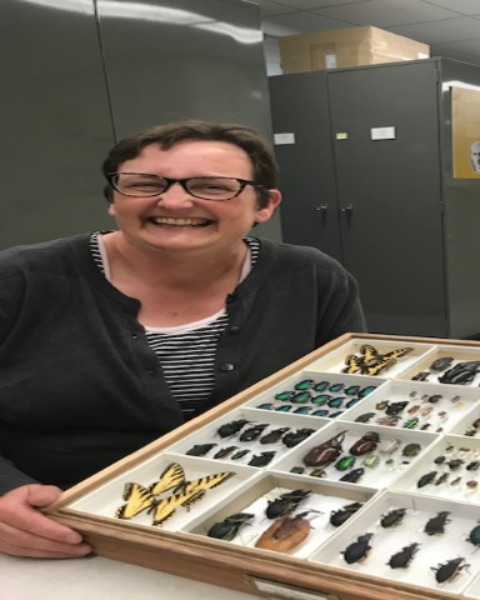SysEB
Student Competition 10-Minute Paper
Grad 10-min: SysEB, Biodiversity
The abundance and diversity of ground beetles (Coleoptera: Carabidae) captured in semiochemical-baited traps targeting the pea leaf weevil, Sitona lineatus L. (Coleoptera: Curculionidae) in pulse crops on the Canadian Prairies
On-Demand

Maggie MacDonald
University of Alberta
Edmonton, Alberta, Canada
Maya L. Evenden
University of Alberta
Edmonton, Alberta, Canada
Presenting Author(s)
Co-Author(s)
The pea leaf weevil (PLW), Sitona lineatus L. (Coleoptera: Curculionidae), is a significant pest of field pea, Pisum sativum L. (Fabaceae), and faba bean, Vicia faba L. (Fabaceae), that has recently invaded the Canadian Prairie Provinces. Semiochemical-based monitoring can detect PLW population spread and local movements but results in significant ground beetle bycatch. Ground beetles predate agricultural pests and are considered beneficial insects in agroecosystems. Bycatch data collected in monitoring programs can be valuable in conservation studies that identify diversity and abundance patterns of ground beetles in agroecosystems. The objective of this study is to survey diversity and abundance of ground beetles in monitoring traps that target PLW, and compare differences in carabid assemblages between field pea and faba bean, baited and unbaited pitfall traps, spring and fall activity (season), and growing regions in Alberta, Canada. Pitfall traps were established on a transect on crop field margins. Ground beetle bycatch caught in PLW pitfall traps were counted and identified to species. Non-metric multidimensional scaling (NMDS) and Analysis of Similarities (ANOSIM) analyses revealed significant differences in ground beetle diversity by geographic region and site but not by crop type, pitfall trap bait, or season. Region was the only significant predictor of ground beetle abundance as analyzed by generalized linear mixed effects models (GLMM). This study will reveal the carabid community structure associated with Alberta pulse crops.


